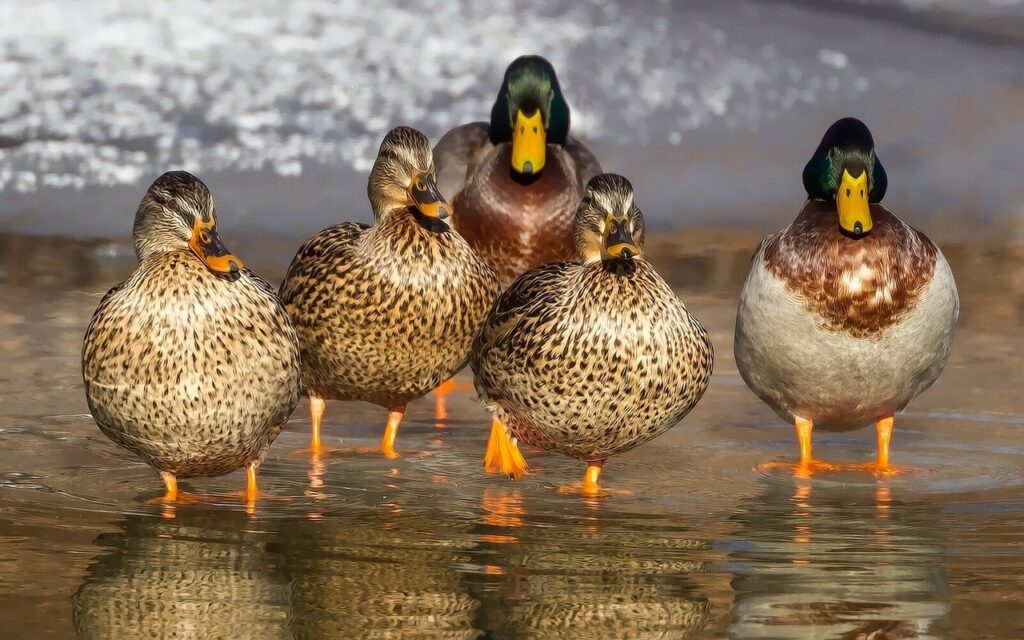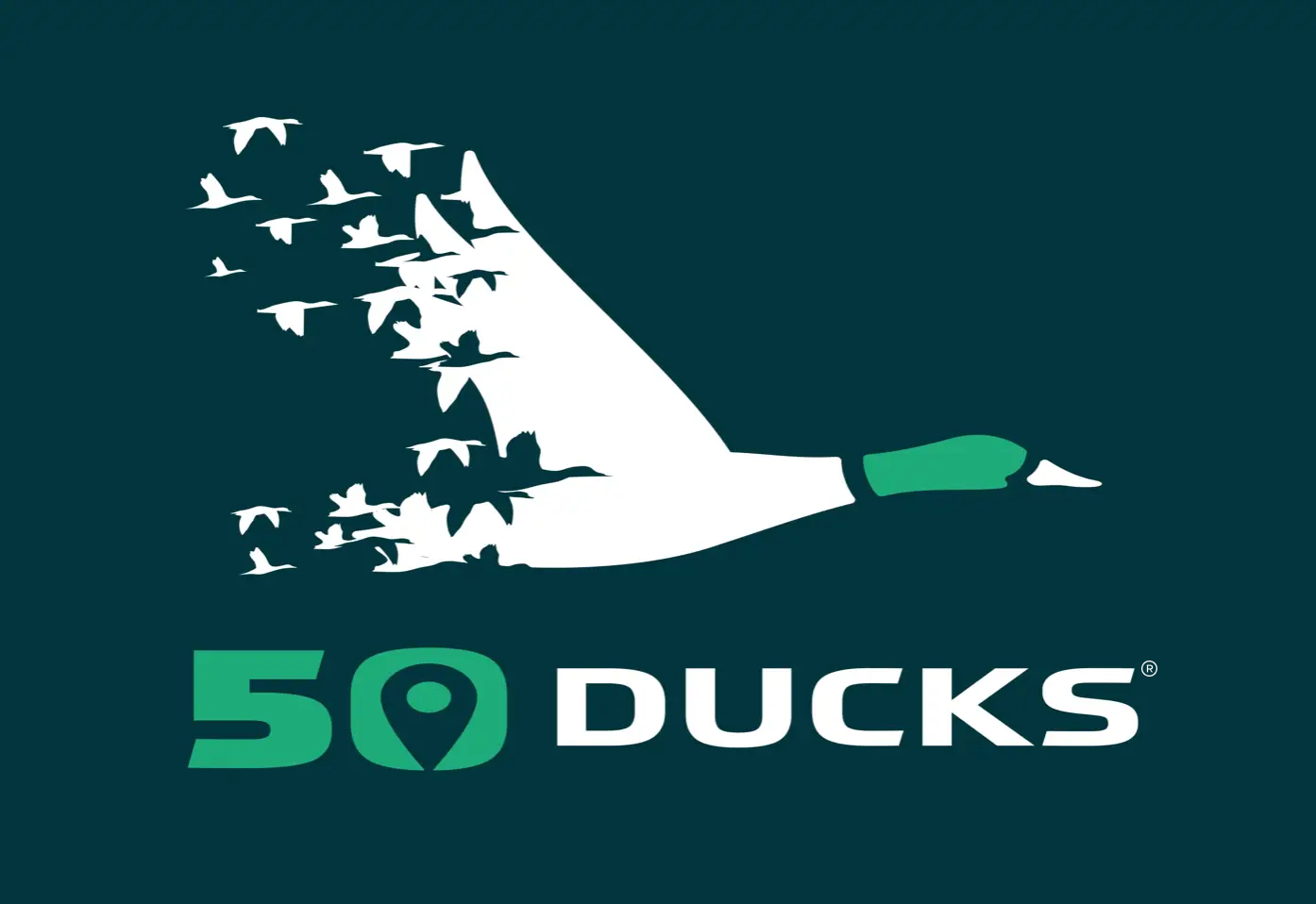The History of Ducks: Ancient Times to Modern Day
Greer Smith
December 8, 2023

Have you ever wondered where waterfowl come from or how long they’ve inhabited our planet? In this post, we reveal the history of ducks and their evolution. As we all continue to be intrigued with behavioral actions such as ‘preening’ for self-cleaning, ducklings that take flight in 5-8 weeks, and their funny-looking webbed feet, we cannot help but wonder about their remarkable origins.
With insights into their genetic legacy and the astonishing attributes that set them apart, we become more knowledgeable about our beloved waterfowl and foster enthusiasm to protect wetlands and ecosystems. Let’s dive in and explore a few fantastic facts about ducks and uncover the mysteries surrounding these majestic creatures.
Evolutionary Origins of Ducks
Scientific studies into the history of ducks on Earth have unveiled a profound journey spanning at least 25 million years. Rooted in the Oligocene era, the oldest fossils anchor these waterfowls in a distinctive chapter of avian evolution. Genetic evidence suggests a legacy reaching about 10 million years beyond the fossil record. Over several decades of research, ducks emerged as an original evolutionary group of direct descendants of one common ancestor. That sets them apart in the vast avian family tree.
Examining their physical attributes reveals the brilliance of evolution. Ducks’ adaptations tell tales of survival. Their webbed feet have no blood vessels or nerves and allow efficient swimming at temperatures above freezing. The mallard’s pecten, ingenious tooth-like combs aid in food consumption in wetlands, marshes, and hardwood forests. As members of the Anatidae family, alongside geese and swans, ducks thrive on all continents except Antarctica.
From humble beginnings to their present-day prominence, ducks have developed unique characteristics. They possess a remarkable oily coating on their feathers, which serves multiple purposes, including waterproofing their plumage, regulating body temperature, and maintaining buoyancy. This adaptation prevents water from saturating their feathers, allowing them to stay dry and lightweight, ideal for efficient flight. As a result, ducks can effortlessly float, glide, and dive through water while staying insulated.
Domestication of Ducks
When we examine the topic of domestication, we unearth a history of ducks that spans over 3,000 years in Southeast Asia and China, where these birds have played a pivotal role in agriculture. Beyond their cultural significance, ducks are excellent pest controllers, feasting on insects that threaten crops, particularly in rice paddy fields. Among the well-known domesticated duck breeds are the Pekin, Rouens, Cayuga, and Khaki Campbells, each with distinct characteristics.
Ducks make significant contributions to local food markets, thanks to their rapid growth rates, making them an efficient source of meat. One of the most amazing facts about ducks is that in as little as seven weeks, baby ducks are ready for market. Even in their mature stages, their tender meat remains highly sought after. Their eggs, larger and more nutritious than chicken eggs, find diverse culinary applications, from everyday cooking to delicacies like balut in the Philippines.
In addition to their edible contributions, ducks provide valuable resources such as feathers and down, highly prized for their use in pillows and winter clothing. Cultural practices, primarily observed in China, involve ducks clearing fields and water bodies of algae, weeds, and crabs, enhancing crop yields while fattening the ducks for consumption. From an economic standpoint, domesticated ducks are valuable assets as they are easy to train, respond well to herding, and don’t need humans to feed them.
Natural Habitats and Behavior

As we continue to investigate the history of ducks regarding habitats and behavior, we find that waterfowl thrive in various aquatic settings. Ponds, streams, and flowing rivers are perfect abodes for these remarkable creatures. Even in highly populated areas, we often encounter Mallards gracefully inhabiting city parks, where they engage with humans in hopes of securing a tasty treat.
Regardless of migratory patterns, Mallards exhibit a year-round presence in North America. Many breed in the northern regions during the warmer months and then venture south for the winter. Beyond their habitats, the behaviors of wild duck populations are captivating spectacles. Elaborate mating rituals involving dances, calls, and vibrant feather displays are a sight many have never seen.
Female ducks, known for their monogamous nature during breeding seasons, partake in an enchanting courtship dance when they are ready to mate. If you’re looking for amazing facts about ducks, here’s one that’s a little odd. Although females choose one mate, male Mallards have a wandering eye. They sometimes seek out females other than their partners for “extra-pair copulations.” It’s a common phenomenon observed in various bird species, but in the case of Mallards, forced copulations occur often involving multiple males in hot pursuit of a single female.
History of Ducks in Art, Literature, and Culture
For centuries, ducks have captivated the world of art and literature. Their historical representation and symbolic significance have permeated every continent they’ve inhabited. Throughout ancient cultures, ducks were immortalized in stone carvings, cave murals, and pottery, often associated with water deities and the concept of purity.
During the Renaissance Era, still-life paintings adorned with ducks symbolized the abundance of nature. When searching for more amazing facts about ducks, we find that Ancient Greek society, specifically Plato and Aesop, incorporated them into philosophical writings and storytelling. Each of them produced infamous pieces of literature that helped to form the framework of democracy that we cherish today. From wooden sculptures to porcelain figurines and metal artwork, artists globally continue to capture the grace of ducks in various poses, showcasing their beauty in flight or nurturing their chicks.
The history of ducks in the religious practices of Mesopotamia highlights the belief in fertility, regeneration, and divine grace. Beyond the visual arts, ducks have transcended time and found a place in literature and folklore. Icons like Daffy and Donald Duck are infamous in the entertainment world. Even in today’s popular culture, we see ducks represented in commercials, on television, and even as mascots for universities. Beyond mere characters, they have become metaphors representing family, community, abundance, and good luck in diverse cultures.
Wrapping Up
In conclusion, our journey through the history of ducks has unveiled their evolutionary origins, domestication, fascinating behaviors, and profound impact on art, literature, and culture. From ancient civilizations to modern-day representations, ducks have captivated our imaginations and symbolized various aspects of human life.
As we appreciate the many amazing facts about ducks, the need to prioritize conservation becomes abundantly clear. By supporting initiatives and organizations dedicated to preserving their habitats and populations, such as 50 Ducks, you can do your part to secure a flourishing future for these incredible creatures. Let’s unite in our commitment to environmental awareness and collective action so ducks can continue to thrive for generations to come. Thanks for reading!
